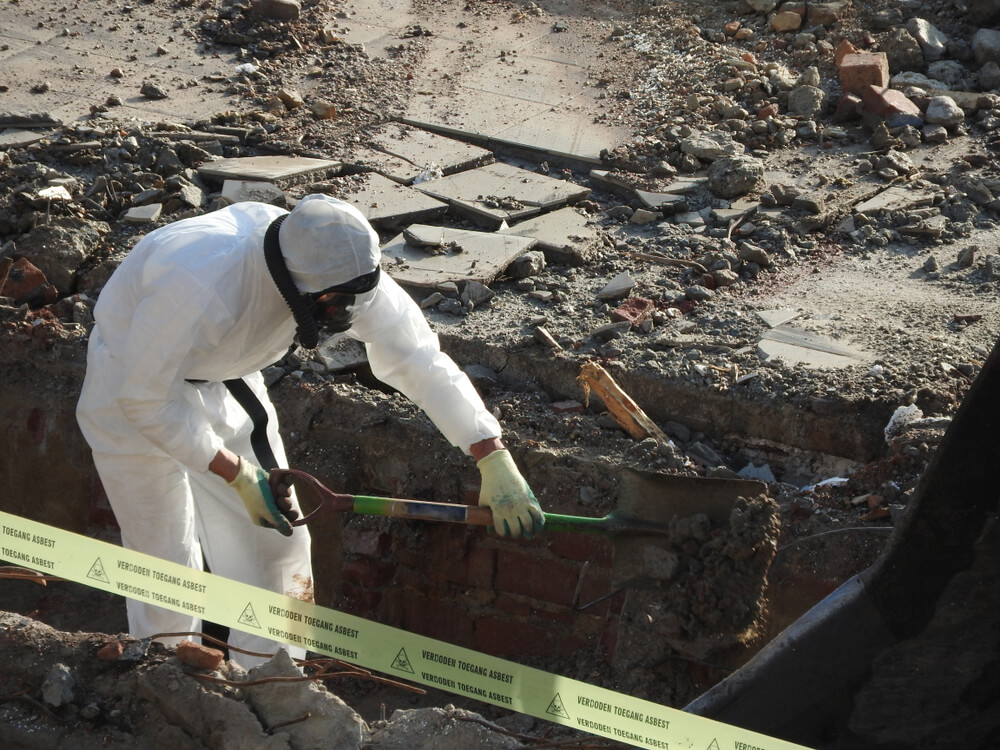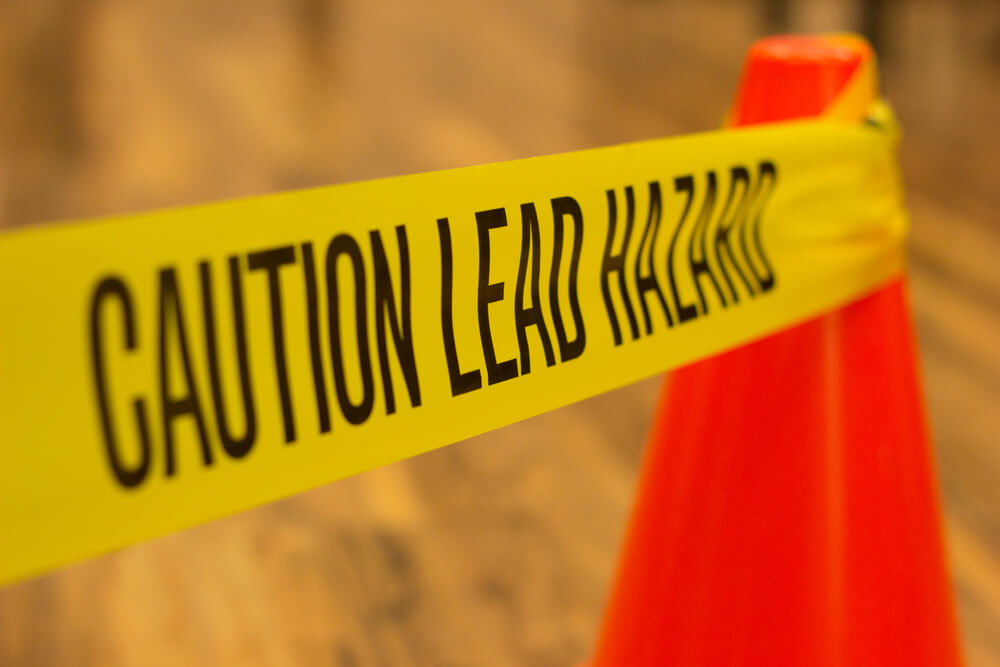Many people consider lead poisoning to be an issue of the past. However, with modern-day epidemics like The Flint Water Crisis and thousands of children exposed to lead each year, lead safety is clearly still a present concern. Thankfully, nowadays, we have the resources to remove lead through certified lead abatement. However, before lead can be removed, it needs to be identified.
The presence of lead in homes and commercial properties is no light matter. Property owners have a moral responsibility to inform all occupants about the existence of lead in their property. When people are informed, they can make educated decisions about their safety and comfort.
Today, we have a host of information and resources dedicated to protecting people from the dangers of lead exposure. Keep reading to learn more about how to remain safe as you identify and remove lead.
The History of Lead Paint
If you walked into a hardware store today and asked for lead-based paint, you would probably get many strange looks. Lead paint hasn’t been manufactured in the United States since 1977, but it was a commonplace product before that.
The history of lead paint dates back to the 4th century BC. People were fascinated by the dense, white color, long-lasting finish, and accelerated drying time of lead-based paint. However, most people were unaware of its harmful effects.
Lead-based paint rose in popularity in the United States during the 19th century. People loved the affordability and durability of lead paint, so it was found in most homes built in the 1800s and early to mid-1900s.
Around the 1920s, more and more consumers noticed the major health concerns brought about by exposure to lead paint, including:
- Vomiting
- Seizures
- Fatigue
- Hearing loss
- Migraines
- Developmental delays in children
- Fertility issues
- Mood disorders
While other countries banned lead paint, the United States remained stagnant. It wasn’t until 1977 that Congress completely prohibited the use of lead-based paint in all residential and public properties, toys, and furniture. More legislation came in the form of required disclosures which state that all homeowners of properties built in 1978 or earlier must disclose the presence of lead paint to potential occupants.
Essential Lead Safety Resources
Many homes and commercial properties from 1978 or earlier are still standing, meaning great quantities of these properties have lead exposure risks. Tenants and homeowners need to be aware of any presence of lead and the helpful lead safety resources available to them. Some fantastic lead safety resources include:
EPA Lead Risk Reduction Program
The Environmental Protection Agency (EPA) hosts a Lead Risk Reduction Program. The main objective of this program is to reduce elevated blood lead levels in at-risk children. Lead poisoning disproportionately affects children of color and people in low-income households, and the EPA’s program aims to combat lead exposure through public outreach efforts, regulations, and training programs.
Lead-Safe Toolkit for Homes
Every homeowner should utilize the Lead-Safe Toolkit provided by The National Center for Healthy Housing. Their lead exposure prevention resources offer valuable information for homeowners, schools, and childcare centers.
CDC Childhood Lead Poisoning Prevention Program
The Centers for Disease Control and Prevention (CDC) solidified a lead prevention program in the early 1990s. Titled the Childhood Lead Poisoning Prevention Program, this public health initiative seeks to prevent and eliminate childhood lead poisoning. The efforts are supported through accessible blood lead testing, increased lead inspections, and access to appropriate assistive services.
Coalition to Prevent Lead Poisoning
A national organization that provides educational resources and advocates for childhood lead poisoning prevention is The Coalition to Prevent Lead Poisoning. This organization provides informative materials about lead exposure and removal in hopes of eliminating childhood lead poisoning.
National Lead Poisoning Prevention Week
During a powerhouse week in October, the EPA, CDC, and Department of Housing and Urban Development (HUD) work together to raise awareness about lead poisoning and provide resources to homeowners and other property owners. The goal of this program is to take a proactive approach towards lowering lead exposure levels in children.
Lead in Your Home? Hire an Abatement Specialist
“Abatement” isn’t a commonly used term, but it refers to the process of removing hazardous materials contaminated by lead. If you purchase a home with a disclosed lead presence, you have the option to remove the risk by hiring a lead abatement specialist.
If you think you can avoid the lead problem because the paint is only located in a specific area, remember that lead can be found in many unassuming places, including:
- Dust
- Paint
- Pipes
- Stairs
- Handrails
- Doors and doorframes
- Windows and window frames
- Trims
- Porches
Even if you rarely interact with the specified area, dust can quickly form and spread, which increases your risk of lead exposure. To keep yourself and your loved ones safe from lead exposure, hire a lead abatement specialist right away. The specialists can remove the lead entirely, or they can effectively cover the area if removal would affect your home’s structural integrity.
Before making a hiring decision, look for certain qualities in lead abatement specialists. Prioritize finding a transparent abatement specialist with plenty of experience and up-to-date EPA certifications. Each member of the lead abatement team should be individually certified by the EPA.

Dealing With Lead as a Contractor
Homeowners aren’t the only people who need to tread carefully when lead-based materials are present. Contractors and construction workers must follow strict EPA-created regulations when they work on projects with potential lead exposure.
All contractors must be certified through the EPA before participating in any renovation projects that may disturb lead-based materials. If a contractor’s certification expires, they must obtain an EPA Lead Renovator Refresher Certification, or else they could face hefty fines of up to $37,500 per day.
Since construction workers face serious health risks when lead is involved, contractors must interact with lead-based materials differently than other projects. A lead inspector needs to assess the affected area before construction can begin. During renovations, all contractors must stay protected by wearing safety equipment that includes:
- Respirator masks
- Goggles
- Gloves
- Protective suits
Additionally, the work area must continuously be kept clean, and designated handwashing and shower stations must be accessible. Contractors should also prioritize efforts to minimize dust by using wet sanders and misters.
Addressing Questions About Lead Removal
If you learn about lead presence in your home, your mind may start racing with numerous questions about renovations and removal. Perhaps you’re a landlord or property manager, and you have no idea how to tell a potential renter about the presence of lead paint. Or maybe, you want to start a construction business and are unsure which lead certifications are required.
As a rule of thumb, remember that certified professionals must perform all interactions with lead. Certified lead renovators, inspectors, or risk assessors are the only people who can verify the presence of lead. Removal must be performed by an accredited lead abatement specialist.
Before diving into lead abatement, get in touch with an experienced lead abatement team who can answer any questions you may have. They will make sure all the occupants in your property remain safe before, during, and after the abatement process.
Stay Safe and Informed About Lead Exposure
The more people who receive knowledge and information about the dangers of lead exposure, the safer our communities will be. Thankfully, as federal, state, and local safety efforts ramp up, more homeowners and property managers are aware of lead exposure risks each year. We still have a long way to go, but the hope is that the United States will completely eliminate lead exposure risks one day.


